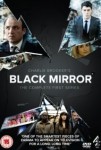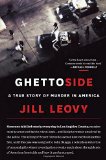|
|
I recently read that many states have laws that automatically make virtually all men between certain ages part of that state’s “militia.” South Dakota is one of a number of states where the automatic membership arises from the state Constitution.
Article 15, § 1 of the Constitution says, “The militia of the state of South Dakota shall consist of all able-bodied male persons residing in the state, between the ages of eighteen and forty-five years, except such persons as now are, or hereafter may be, exempted by the laws of the United States or of this state.” This has been part of the state constitution since it was adopted in 1889. In the mid-1970s, the legislature twice proposed repealing this provision but voters soundly defeated both proposals.
In SDCL 33-2-2, whose predecessors also date back to the 19th century, the legislature divides the militia into two classes: the National Guard and “the unorganized militia.” So any man within those age brackets not in the National Guard (or active military) is a member of the unorganized militia. I guess that meant I was a member for 27 years without knowing it. This statute differs from the Constitution in that it says it applies to “all able-bodied qualified residents of the state,” not just “able-bodied male persons,” who are within the current age limits to enlist in the active U.S. military.
There’s also some lengthy federal historical roots to state militias. Most obvious is the fact the federal Constitution says the president is not only commander-in-chief of the armed forces but also “the Militia of the several States when called into the actual service of the United States.” Likewise, the Second Amendment’s right to keep and bear arms arises because a “well regulated Militia [is] necessary to the security of a free State.”
Several months after the Bill of Rights was ratified, Congress enacted what’s called the Second Militia Act of 1792. It required that “every free able-bodied white male citizen” of a state at least 18 years old and under 45 years old be enrolled in that state’s militia. Although the act was repealed by the Militia Act of 1903, its essence remained. The new Militia Act just didn’t say an individual had to be free and white. It created two classes of militia: “organized militia” and “the Reserve Militia.” The Act denominated the organized militia as the National Guard, which consisted of active militia units in the states that received federal support.
Many of the state constitutions establishing militias contain an interesting provision. South Dakota’s appears in Article 15, Section 7, “No person having conscientious scruples against bearing arms shall be compelled to do military duty in time of peace.” Such provisions appear to be a method of recognizing religious-based objections, such as by Quakers. Note, though, the caveat that this applies only “in time of peace.” I speculate this was to recognize and preserve a state’s power to conscript in time of war.
I’m just kind of surprised that I’m only now learning I was a militiaman nearly half my life.
…members of the “unorganized” militia were NOT supposed to perform any duty or carry any weapons or have any responsibilities.
Militia History and Law FAQ (1995)
Books
Hubert Wolf’s The Nuns of Sant’Ambrogio: The True Story of a Convent in Scandal epitomizes how history should be written for the general public. Although the PR around the book promises a look at “sex, poison, and lesbian initiation rites in a nineteenth-century convent,” this is in no way a lurid read. Sure, the story is about a sexual and theological scandal in a Roman Catholic convent in Rome in the 1850s but it’s all placed in historical context that actually educates.
 The underlying story is based in large part on source documents of the subsequent hearings before the church’s Congregation of the Holy Office (a/k/a “The Inquisition”). Wolf came across those documents in the Vatican archives first made available to researchers in 1998. But Wolf, a professor of church history at the University of Münster, goes behind the trial documents and analyzes the entirety of what transpired. The underlying story is based in large part on source documents of the subsequent hearings before the church’s Congregation of the Holy Office (a/k/a “The Inquisition”). Wolf came across those documents in the Vatican archives first made available to researchers in 1998. But Wolf, a professor of church history at the University of Münster, goes behind the trial documents and analyzes the entirety of what transpired.
Among other things, Wolf lays out and explains in language lay readers can understand how theological and doctrinal changes and differences within the Roman Catholic Church were integral to what happened and the subsequent hearings. Of necessity, the heavily-sourced The Nuns of Sant’Ambrogio goes inside then-current Vatican and church politics but, again, the book does so in a highly accessible fashion. In fact, I may have learned more about the history of the church I was raised in with this book than any other I’ve read. This is a work that deserves serious consideration when nonfiction book awards roll around.
Video
My experience with Black Mirror came about because my youngest daughter thought I might like it. She nailed it.
 This is a BBC television series Netflix is carrying, just like last month’s movie/DVD/streaming favorite, and it focuses on the effects of technology on us and society. The stories are always set in the near future and do have a slight Twilight Zone feel. The first episode, my favorite, is about perhaps the most outlandish terror plot you can think of. Yet it is really about how we deal with terrorism and the role of media in society and our relationship with and consumption of it. This is a BBC television series Netflix is carrying, just like last month’s movie/DVD/streaming favorite, and it focuses on the effects of technology on us and society. The stories are always set in the near future and do have a slight Twilight Zone feel. The first episode, my favorite, is about perhaps the most outlandish terror plot you can think of. Yet it is really about how we deal with terrorism and the role of media in society and our relationship with and consumption of it.
Each episode is a separate cautionary tale tinged with dark with satire. Unfortunately, each season consists of only three episodes, all but one of which is 45 minutes in length. The BBC aired a “Christmas special” in December, which hasn’t hit Netflix yet, and the third season has yet to begin across the water. Since there are far too few episodes to satiate a person, the BBC and Netflix are being cruel to us addicts.
If necessary, the actual truth could be told, but the really interesting facts were deliberately omitted.
Hubert Wolf, The Nuns of Sant’Ambrogio
Bulletin Board
- If you happen to be in the Rapid City area tonight, the Rush hockey team is wearing Dr. Seuss jerseys at their game tonight, which includes a book drive
Worthwhile Reading in the Interweb Tubes
- What Are We Doing? (“Particularly frustrating to me is that despite all the effort (public and private) and the billions of dollars that are spent, people are hungry in America. We have literally thousands of federal programs and grants for practically every imagined and even unimagined purposes yet many people among us including large numbers of children remain hungry.”) [Look out, Joel. You’re starting to sound like me.]
- My Prescribed Life (“What I do know is that if I subscribed to popular notions of essentialized selfhood, my true identity would look like a feverishly anxious mass of phobias and self-loathing. Had I stuck with that girl, I’d be either in a padded cell or dead.”)
- How I Learned To Be OK With Feeling Sad (“Now, sometimes when I’m not sad and I think about sadness, that thought is accompanied by this startling one: I miss it.”)
Bookish Linkage
Nonboookish Linkage
If I were human I believe my response would be “go to hell.”
Spock (Leonard Nimoy), Star Trek VI: The Undiscovered Country
One of the best things about reading history is the insight or perspective it can provide on today. I saw a perfect example over the weekend in The Nuns of Sant’Ambrogio: The True Story of a Convent in Scandal. Written by German ecclesiastical historian Hubert Wolf, the book looks at the Roman Catholic Church’s investigation of activities at a convent in Rome. In examining some of the doctrinal issues that played an underlying role in the investigation, Wolf sheds a bit of historical light on a modern controversy.
In the years of coverage of sexual abuse by Catholic priests, there’s been a lot of attention directed at whether or why Church officials were so secretive about — or even covered up — those activities. The Church has been condemned by many for not only keeping quiet but dealing with such situations by transferring offending priests to another parish or diocese. While that might seem like a modern reaction, The Nuns of Sant’Ambrogio indicates it has a historical basis.
According to Wolf, until the mid-nineteenth century any sexual misconduct by a priest was made public. As a philosophy known as ultramontanism — the source of the concept of papal infallabiligty — grew within the church, though, priests gained an elevated status. According to Wolf, while engaging in sexual activities “didn’t make priests unworthy of their cult status according to canon law,” not surprisingly it did diminish their status with conservative parishioners. There was a simple solution to that: “their sins couldn’t be allowed to become public.” And Roman Catholic authorities put this idea into practice,
Although an 1853 Catholic encyclopedia indicated that monastic priests who used their position as confessors to solicit a penitent into “immoral or indecent acts” were subject to “exile, the galleys, life imprisonment, degradation and being delivered up to the secular judges,” that wasn’t the case. At least according to the contemporary source Wolf relies upon for the activities of the Church’s Holy Office at the time, it took three denunciations by “honorable women” before a case came before the Holy Office. Even then, it “treated these priests with extreme leniency: they were usually just assigned a penance, and had to spend a few days saying psalms. Members of their order who also happened to be consultors or cardinals of the Holy Office often made sure that the defendants could lie low in another monastery for a while.” In fact, Wolf’s source observes that if the priest spontaneously confessed, “‘tutto è finito,’ everything is all right again.”
So maybe we shouldn’t be surprised at the Church’s handling priests who engage in improper sexual conduct. It is apparently simply adhering to traditions established some 150 years ago. I’ve never seen this mentioned in the media. Rather, we need history to provide context for current affairs.
Every investigative body that has studied these situations … has reached the same inevitable conclusion: The primary concern of Church officials in these cases has been to protect the reputation of the Church and its priests – not the best interest of the child.
The Center for Constitutional Rights, Fighting for the Future
Plague. Even today, the word retains fearsome connotations. But according to Jill Leovy, there’s been a plague in America for several decades: the murder of black males, mostly by other black males. In Los Angeles County, for example, even though black men were just six percent of the population, they accounted for 40 percent of the homicide victims
In fact, homicide became so commonplace it reached “dog bites man” status. In the mid-2000s, the Los Angeles Times reported on only about 10 percent of the homicides in L.A. County. In late 2006, Leovy, a Times police beat reporter, launched a blog called The Homicide Report for the newspaper. That work and twice “embedding” with homicide detectives in the L.A. Police Department’s 77th Division — an area in South Central L.A. dubbed “Ghettoside” by a Watts gang member — ultimately led to the recently published Ghettoside: A True Story of Murder in America.
 Focusing in large part on one detective and built largely around one murder, the book explores this “bizarre phenomenon.” And Leovy reaches a conclusion many might consider outlandish. She contends black-on-black murder has become endemic because there is “too little application of the law, not too much.” She says the law fails black people because police have focused too much on so-called preventive strategies rather than solving murders. The former approach, Leovy says, results in harassing people on small pretexts and charges of heavy handedness instead of catching and punishing murderers. Focusing in large part on one detective and built largely around one murder, the book explores this “bizarre phenomenon.” And Leovy reaches a conclusion many might consider outlandish. She contends black-on-black murder has become endemic because there is “too little application of the law, not too much.” She says the law fails black people because police have focused too much on so-called preventive strategies rather than solving murders. The former approach, Leovy says, results in harassing people on small pretexts and charges of heavy handedness instead of catching and punishing murderers.
Ghettoside‘s supports its thesis with its main protagonist, John Skaggs. Skaggs is an LAPD homicde detective who combines compassion and empathy for victims and their families with dogged investigation. A number of his cases portray his adroit investigative techniques, including relentless on-the-street efforts to find and interview potential witnesses. Given that speaking to the police — let alone testifying in court — can put a person’s own life in danger, Skaggs also is seen encouraging and babysitting witnesses in this process. The first half of the book uses the work of Skaggs and other detectives to show the breadth of the problem and the inner workings and dilemmas of homicide investigations. Although coming into greater focus in the second half of the book, the the book builds around the murder of 18-year-old Bryant Tennelle, shot down while walking along a street pushing his bicycle and carrying a root beer. Tennelle wasn’t a gang member but happened to be wearing a baseball cap associated with an area gang. By chance, he is the son of a highly respected African-American LAPD homicide detective who lives in Ghettoside. Together, the two angles illustrate the difficulty — both in terms of resources and public cooperation — in dealing with murders that frequently have some gang involvement or relationship.
Leovy’s approach, particularly in the first half of the book, tends to introduce a lot of other cases and names, which can be confusing at times and occasionally portray people in almost walk-on roles. While they also let us see victims’ families and inside the criminal justice system, they have a tendency to distract from the story arc. Similarly, while internal LAPD politics and priorities certainly play a significant role in Leovy’s thesis, Ghettoside at times has a sort of “Inside Baseball” sense to it. Despite this, Leovy never really seems to directly address the extent to which Tennelle’s father being a cop impacted the resources and efforts directed toward the investigation of his murder.
Still, Leovy effectively combines journalistic and sociological inquiry to give a very readable and unprecedented look at what too many Americans shrug off as simply “inner city” gang violence. Ghettoside helps shed a light on not only the problem but its victims. Perhaps as important, it reinforces that, as one detective puts it, even if a murder victim was a prostitute, “She’s some daddy’s baby.”
…when people are stripped of legal protection and placed in desparate straits, they are more, not less, likely to turn on each other.
Jill Leovy, Ghettoside
|
Disclaimer 
Additionally, some links on this blog go to Amazon.com. As an Amazon Associate I earn from qualifying purchases. There is no additional cost to you. Contact me You can e-mail me at prairieprogressive at gmaildotcom.
|

 This is a BBC television series Netflix is carrying, just like last month’s movie/DVD/streaming favorite, and it focuses on the effects of technology on us and society. The stories are always set in the near future and do have a slight Twilight Zone feel. The first episode, my favorite, is about perhaps the most outlandish terror plot you can think of. Yet it is really about how we deal with terrorism and the role of media in society and our relationship with and consumption of it.
This is a BBC television series Netflix is carrying, just like last month’s movie/DVD/streaming favorite, and it focuses on the effects of technology on us and society. The stories are always set in the near future and do have a slight Twilight Zone feel. The first episode, my favorite, is about perhaps the most outlandish terror plot you can think of. Yet it is really about how we deal with terrorism and the role of media in society and our relationship with and consumption of it. 







